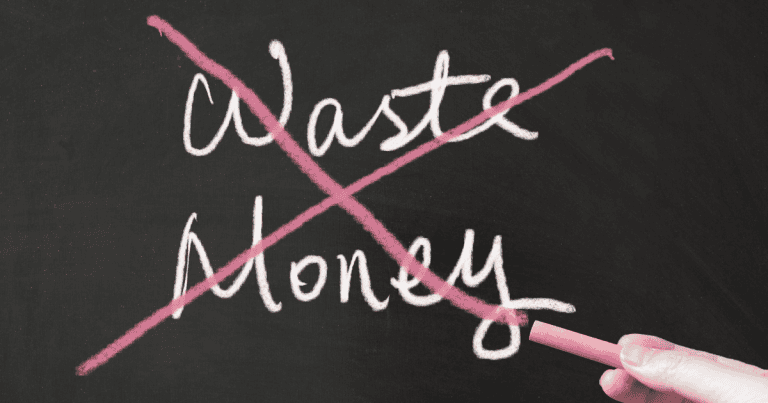50/30/20 Budget: A Simple Guide To Managing Your Money in 2025

If you ever wondered how to manage your money better, the 50/30/20 budget rule might be just what you need. It’s a simple way to divide your after-tax income: 50% goes to needs, 30% to wants, and 20% to savings. This approach can help you make budgeting less stressful and more effective by setting clear categories for your expenses.
Sticking to the 50/30/20 plan can help you set and achieve your financial goals. By knowing exactly where your money is going, you can be more in control of your personal finance.
It might not seem very easy at first, but with a few simple tips, you’ll be on your way to mastering this budgeting method. You’ll find that small changes in how you handle money can make a big difference. Let’s jump in and see how this rule can actually change your financial life.
What is the 50/30/20 Budget Rule?
The 50/30/20 budget rule is an easy way to manage your finances by dividing your after-tax income into three key areas: needs, wants, and savings. This method helps you create a balance between essential expenses and personal desires while ensuring that you still save money for the future.
The rule breaks down your monthly income like this: 50% for needs, 30% for wants, and 20% for savings. Your needs include essential expenses such as housing, utilities, and groceries. These are costs you can’t avoid.
Your ”wants”, on the other hand, cover things like dining out, entertainment, shopping, and hobbies. These make your life more enjoyable, but they aren’t necessary.
And finally, savings. This includes any contributions to an emergency fund, retirement accounts, or debt repayment.
How to Implement the 50/30/20 Budget
Start With Your Needs aka Essential Expenses
First, figure out what you absolutely need to spend money on each month. This includes anything like rent or mortgage, utilities, groceries, and insurance. These are your essentials and must-pay expenses. They should take up about 50% of your after-tax income.
Make a list of all your monthly expenses and categorize them. Use a spreadsheet or budgeting app to help you identify and track these costs. Be honest about what you actually need and what you don’t need. It might take a bit to get used to, but knowing exactly where your money is going is crucial. Review your spending habits and adjust them if certain areas seem to be eating up more than they should.
Allocate Money For The Things You Want
Next, allocate 30% of your income for things you want but don’t necessarily need. This can include dining out, entertainment, or that new kitchen set from Target you’ve been eyeing. These are discretionary spending choices.
Be mindful of your spending habits in this category. It’s easy to overspend, so consider setting a limit for each type of want. For instance, if eating out is your thing, decide how many times a month you can do this without breaking your bank.
Make space for fun, but don’t let your wants interfere with your essential expenses or savings. Use apps or a journal to track this spending and make adjustments as needed. By doing this, you ensure that your lifestyle is enjoyable but financially sustainable.
Allocate Money For Savings and Debt Repayment
Finally, focus on the remaining 20%. This portion is dedicated to savings and paying off debt. Consider setting up an automatic transfer to ensure you save consistently.
Now when it comes to debt, prioritize high-interest ones first. Whether it’s credit card debt or student loans, paying more than the minimum can help reduce what you owe faster. It’s also beneficial to have an emergency fund in place, three to six months’ worth of expenses is a good goal to start with.
Balancing savings and debt payments requires a bit of discipline, but you can use budgeting tools to manage it effectively. Saving smart now means you won’t have to worry as much later.

Breaking Down the “50” Essential Needs
It’s no secret that prioritizing your essential needs is the most important. This helps you cover necessary expenses like housing, utilities, and things you need on a daily basis. Let’s explore how to allocate half of your budget to areas like a roof over your head, getting from place to place, and taking care of your health.
Housing and Utilities
Housing costs, such as rent or a mortgage, usually take up the largest chunk of this 50%. Whether you’re renting an apartment or paying off a home loan, it’s important to keep housing expenses within 30% of your monthly budget. This leaves room for utilities like electricity, water, and gas.
Groceries and Transportation
Groceries are another big slice of the pie when talking about essential expenses. Planning meals ahead and buying in bulk can reduce costs significantly. You can get more ideas to reduce costs on groceries in this post.
For transportation, combining trips can help you save on gas and maintain efficiency. Consider using public transit or carpooling whenever possible. If you regularly spend on rideshares, compare costs to see what fits best into your budget.
Insurance and Health Care
Health insurance is non-negotiable and should be part of your budgeting. Shop around annually to ensure you’re getting the best deal on premiums. Don’t forget to account for out-of-pocket costs, like copayments and medication.
Breaking Down the “30” Wants & Lifestyle Choices
The “30%” category is the one that gives you flexibility. This portion is all about spending on things that make your life better, like Netflix, shopping, and take-out food. It’s important to balance pleasure with your financial goals.
Entertainment and Eating Out
Spending on entertainment and eating out can easily get out of hand if you’re not careful. Going to shows, movies, or trying new restaurants can be enjoyable and fun, but it can also drain your budget fast.
Set a monthly limit for how often you want to eat out, see a movie, or shop for new clothes. Look for discounts like happy hour specials or clearance sales to stretch your dollars further. Try cooking special meals at home as a fun way to save money while still enjoying delicious food.
Subscriptions and Memberships
Gym memberships, streaming services, and other subscriptions can also quickly add up without you realizing it. It’s easy to sign up for a free trial and forget about it until you see the charge on your bank statement.
Review your current subscriptions and decide which ones you actually use and can’t live without. You can also consider sharing subscriptions with family or friends to cut costs.
Vacation and Leisure
Planning for vacations and fun activities is the smart way to enjoy your life without breaking the bank. While a getaway you didn’t plan for sounds exciting, it’s better to plan ahead. Look for travel deals and off-season discounts.
Create a savings plan specifically for vacations and fun. This way, you won’t feel guilty when you spend, because you’ve already budgeted for it. Be open to free options too, like hiking or visiting local parks. Carefully managing this part of your budget ensures you can still have fun without sacrificing your financial stability.
Maximizing the “20” Savings and Goals
To make the most of your 20% savings allocation, it’s important to focus on emergency funds, specific savings goals, and smart ways to invest your money. Each of these areas supports your financial stability and gives you more security.
Building an Emergency Fund
An emergency fund is your safety net for unexpected expenses. Try to save enough to cover at least three to six months of living expenses, which include rent, utilities, and groceries. This fund helps you avoid relying on credit cards or loans when emergencies happen.
Start by setting small, achievable targets. For example, begin by saving a specific amount each month, using automatic transfers to ensure consistency. This can make the process more manageable and stress-free.
Setting Savings Goals
Setting clear savings goals gives you direction. Whether you want to save for a vacation, a new car, or home improvements, it’s important to figure out your objectives first. Calculate how much you need and the timeline to achieve these goals.
To stay on track, categorize your savings into short-term and long-term goals. For example, short-term goals could involve saving for a new couch or new laptop, while long-term goals focus on retirement savings.
Investing For The Future
Investing is a key part of building long-term security. It could be in stocks, bonds, or even retirement accounts like an IRA or 401(k). Before you dive into investing, make sure you do some research or consult with a financial advisor if you’re unsure.
Your investment strategy should align with your financial goals and risk tolerance. For instance, the younger you are, the more risk you might be able to take since you have more time to recover from market changes.
Tips for Success with the 50/30/20 Method
Always start with accurate numbers: Get a clear picture of your after-tax income. The better you know your earnings, the easier it is to split them into needs, wants, and savings.
Automate everything: Set up automatic transfers to a savings account. This way, you’re not tempted to spend your savings on something else. You’ll feel good every time your savings grow without much effort.
Track your spending: Keep an eye on where your money goes. Use a budgeting app, a spreadsheet or a notebook to help. Apps like YNAB or Everydollar are good options.
Be ready for changes: Life is unpredictable. Adjust your budget if you get a raise or lose a job. The 50/30/20 rule is flexible and can handle these changes.
Avoid common mistakes: Don’t put your ”wants” in your ”needs” category. It’s easy to convince yourself you need a new something but stick to the things you actually need in the needs category.
Regularly review your budget: Check your budget every month. Are you meeting your goals? If not, tweak it to better fit your lifestyle. Sometimes budgets need adjustment to work perfectly.
FAQ
Conclusion
The 50/30/20 budget rule is a simple way to manage your money. By dividing your income into needs, wants, and savings, it helps you stay on top of your finances while still enjoying life. Start applying it today, and watch how small changes can lead to better savings.






